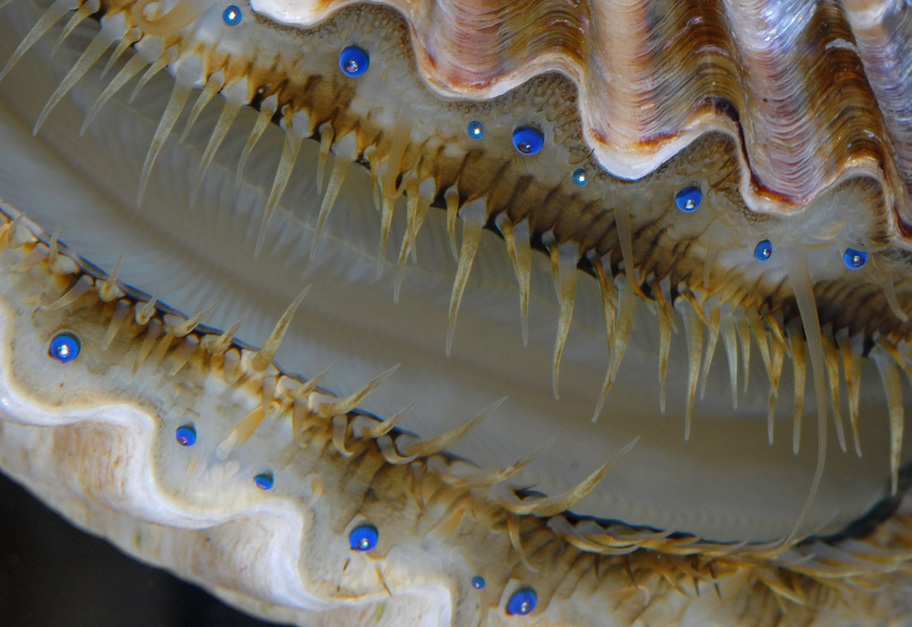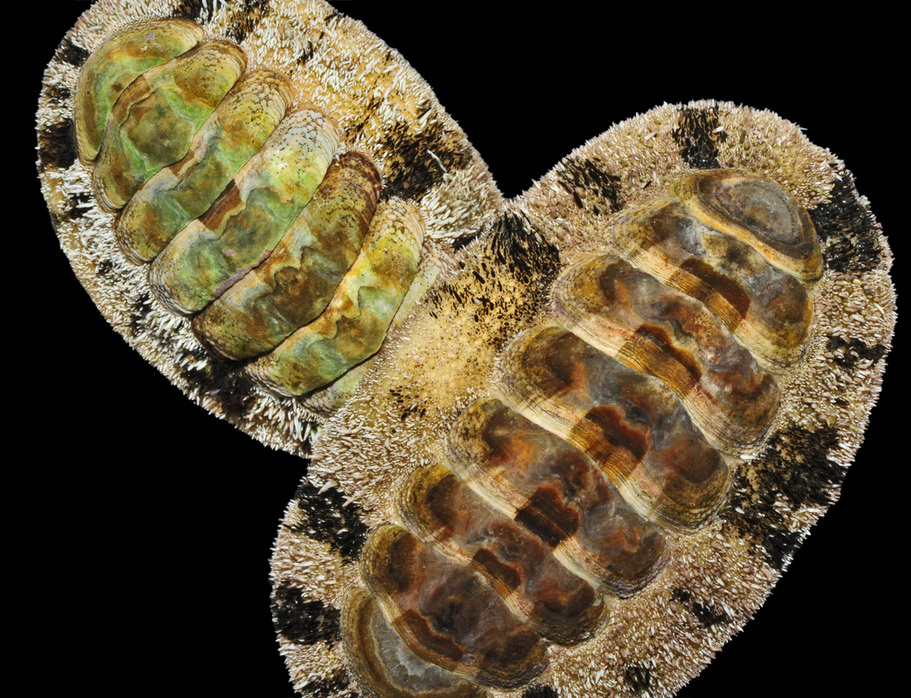Visual Ecology
We are interested in relationships between structure and function, particularly as it relates to visual systems. Many of our projects concern mollusks because of the diversity of eye designs present in this phylum. To explore how different visual systems function in the context of particular environments, we combine several different approaches. These include:
- Behavioral Experiments
- Electrophysiology (e.g. electroretinography and microspectrophotometry)
- Histology (TEM/SEM, confocal microscopy, etc).
- Mathematical modeling in collaboration with Yakir Gagnon and the Johnsen Lab at Duke University.
The Mirror-based Eyes of Scallops
Scallops have dozens to hundreds of mirror-based eyes arrayed along the edges of their valves. In the picture above, note the bright blue eyes of the bay scallop Argopecten irradians. Each of these eyes contains two separate retinas that appear to function independently. We know that the eyes of scallops provide spatial vision that is remarkably acute for a bivalve, but many questions about these eyes remain to be answered. These include:
Scallops have dozens to hundreds of mirror-based eyes arrayed along the edges of their valves. In the picture above, note the bright blue eyes of the bay scallop Argopecten irradians. Each of these eyes contains two separate retinas that appear to function independently. We know that the eyes of scallops provide spatial vision that is remarkably acute for a bivalve, but many questions about these eyes remain to be answered. These include:
- Is there a mechanism through which both of the two separate retinas in the scallop eye may receive focused light?
- Why do scallops have such a sophisticated visual system in comparison to other bivalves?
- Like many other single-chambered eyes, do the mirror-based eyes of scallops demonstrate a pupillary response?
- How and why does eye color (blue/black/brown) vary between different species of scallop?
The Shell-Eyes of Chitons
Certain chitons have hundreds of small eyes integrated into their protective shell plates. In the image above, these eyes are just visible as small black dots on the shell plates of a pair of West Indian fuzzy chitons (Acanthopleura granulata). These eyes are unlike those of any other animal. Most eyes use protein-based lenses for focusing light, but the eyes of chitons form images using lenses made of the mineral aragonite (CaCO3). Further, the lenses are birefringent, meaning that each lens forms two separate images simultaneously. Questions we are asking about the shell-eyes of chitons include:
Certain chitons have hundreds of small eyes integrated into their protective shell plates. In the image above, these eyes are just visible as small black dots on the shell plates of a pair of West Indian fuzzy chitons (Acanthopleura granulata). These eyes are unlike those of any other animal. Most eyes use protein-based lenses for focusing light, but the eyes of chitons form images using lenses made of the mineral aragonite (CaCO3). Further, the lenses are birefringent, meaning that each lens forms two separate images simultaneously. Questions we are asking about the shell-eyes of chitons include:
- Can birefringent lenses help intertidal animals (like chitons) have visual systems that perform equally well in water and air?
- The lignt-sensing organs of chitons differ between species. Some species only have photoreceptors, whereas others have eyespots or eyes. How do particular light-sensing structures in chitons correlate with particular light-influenced behaviors?
- The lenses of the shell-eyes erode away with time. May certain environmental factors -- such as wave energy -- influence the global distribution of species of chitons with eyes?

